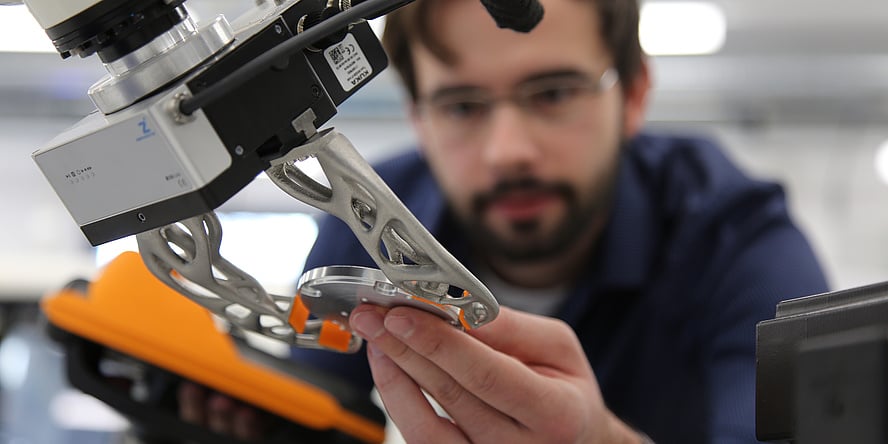
A surgeon will soon be able to print an implant, such as a new rib, in the operating room by themselves. This is possible thanks to a specialized 3D printer for medical implants. The Institute of Production Engineering at TU Graz has designed a new method for this purpose. This 3D metal printing process works using LEDs instead of a laser.
The implant medical sector has been eagerly awaiting a technical breakthrough in this area for a long time already. Solutions currently available for medical implants are often inadequate or unsatisfactory. Essential surgeries of this kind are difficult for patients. LED-3D metal printing makes optimization of the production process possible for medical implants.
3D printing of metal in the operating room
At present, an operation is necessary in order to first measure the damaged area of a patient. If an implant has been made on that basis, it should be fitted to that patient during a second operation. It would be ideal if an implant could immediately be fabricated on site in the operating room during the initial surgery. This would avoid a second operation and any associated risks.
The advantage of being able to fabricate medical implants in the clinic itself is that lines are kept to a minimum. The properties of this custom-made implant are also very good,” says Franz Haas, head of the Institute of Production Engineering. Nevertheless, the production process in an operating room is subject to very strict safety requirements.
Risk factors in a clinical environment
Right now, 3D printing is based on what is known as the SLM process. A laser melts metal powder in this process.
“Current printers feature lasers with a high output. As a result, they use a proportionately large amount of powder. Both are risk factors in a clinical environment,” Franz Haas explains.
Haas and his employees have developed a less risky technique. He uses LED technology for this purpose. With this printing method, an LED light beam is responsible for melting the metal powder.
How 3D printing of metal works
The conventional laser-based printing process for 3D printing of metals is done in three stages. Construction and pre-processing take place in the first phase. In pre-processing, the requisite part is first designed in CAD and then partitioned into a large number of thin layers. Information about these layers is entered directly into the printer. In the printer, a laser melts as much metal powder as is needed to produce that layer, point by point, based on that layer’s data.
This is how the system builds up the required part from scratch, layer by layer. The bottom of the printer and the entire construction area is filled to the brim with metal powder. The laser melts only those spots in the metal powder layer that are needed to make the part. The remaining metal powder is extracted when this is finished. During the final phase of the production process – post-processing – the support structures around the part are removed. Once the subsequent quality control and surface finishing have been completed, the printed part is ready for use.
Franz Haas explains in this video how conventional metal printing works.
Advantage of printing using LED
The use of LED in 3D printing has plenty of advantages according to the researchers:
- LED sources are cheaper and can also be used for flat surfaces. As a result, printing can be done much faster.
- The system works with much smaller amounts of metal powder.
- The support structures can be kept to a minimum.
- There are three types of lighting strategies that can be combined and adapted to the component being printed.
- Only a small amount of gas is needed.
- The finishing process is carried out at the same time as the printing process, which makes production go even faster.
Build your own 3D metal printer
In the meantime, a patent has been filed for this LED 3D metal printing process under the name of SLEDM. Haas’s most important goal is the small-scale production of their own in-house printing system at the Graz University of Technology. This should enable series production of metal printers for the medical mobility equipment and implant health sector.
Aldo of interest:

